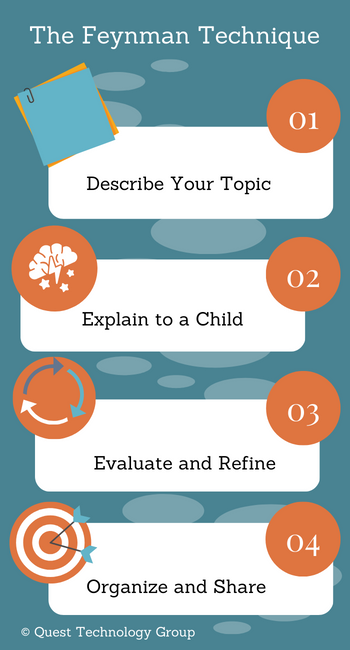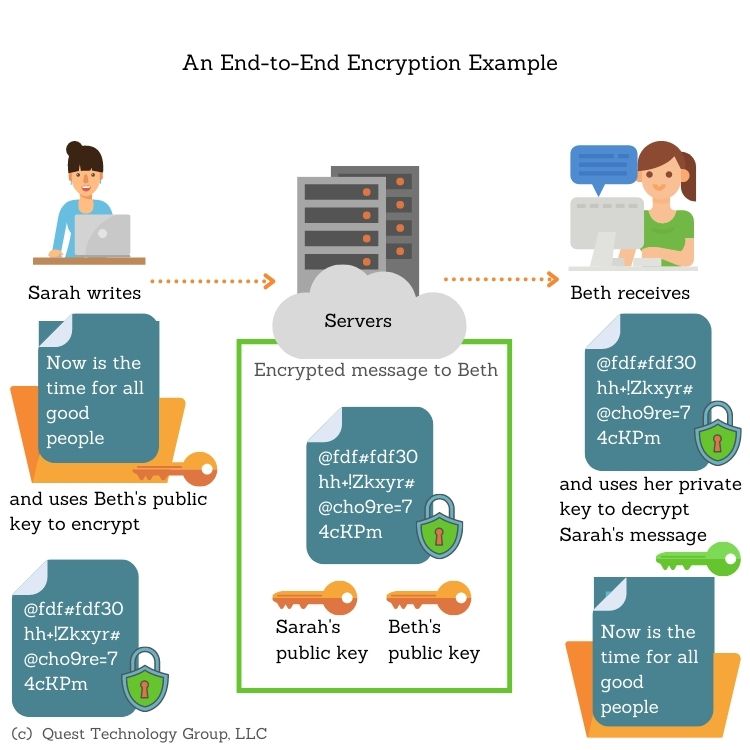Try This Feynman Technique to Learn, Explain Better

Have you ever noticed how crystal clear words sounds in your head -- and how confusing those same out loud words are?
I was wrapping up my laps around the neighborhood and stopped to talk with Robert across the street. The conversation meandered into bank fraud. After some back and forth, Robert said, "Wait. What exactly do you do?"
Since we were on the cybersecurity theme, I answered with words that I thought were spot on in that context. Eventually, I tied it all together with "We're a fractional CIO and cybersecurity company."
"Just say that", Robert said. "Your audience knows what that means. The rest will overwhelm them." And there you have it.
Explaining an important concept to a client or answering the door opening what-do-you-do question are opportunities you don’t want to squander. And yet we all get tangled up in our word complexity.
The Feynman Technique Uses Explaining to Build Learning
Richard Feynman was a Nobel prize winning physicist known for his ability to convey complex concepts in simple, everyday words. He believed that resorting to technical jargon indicated a lack of subject expertise.
The Feynman Technique is a 4-step framework for developing a deep understanding of a subject. A key step in this process is explaining what you’ve learned. And that’s what makes this simple roadmap such an effective communication tool.
Let’s jump in.

1) Describe your topic
2) Explain what you know
3) Evaluate and refine your results
4) Organize and clarify your message
A Real Example of the Feynman Technique
The Google search phrase “what is data in transit” brings visitors to our website every day. I have no idea why folks are searching for this, but it happens. This is an important technical concept where helpful meaning is quickly lost in jargon. For that reason, we use both simple words and an illustration to explain it.
Here’s a snippet of the words and the visual from our website.
What is Data in Transit?
Data in transit, also called data in motion, is data that is actively moving from one location to another. This can be across the internet, within a private network, or from one device to another.
So much of what we do daily involves data in transit. Sending an email, browsing online, accessing cloud applications, and sending a text all create data in transit.
How is This Data Protected?
As your data moves across the internet or a private network, it passes through several servers, exchanging information (handshakes) before it reaches its destination. It isn't a single point A to point B "hello" "I got it" communication. This means opportunities for the wrong people to access your data.
End-to-end encryption is recommended for secure data exchange. This ensures that data is encrypted so that only the sender and receiver can access it.

One Final Thought
Customers are looking for solutions, and often it's the best explainer who earns the business.
Thanks for Your Wednesday Visit
You're in business to grow and deliver what your customers and clients want most from you.
You've come to the right place. We share information, knowledge, tools, and resources to help you and your business thrive.
Tags: Business Strategy
. . .
 Linda Rolf is a lifelong curious learner who believes a knowledge-first approach builds valuable client relationships. She is fueled by discovering the unexpected connections among technology, data, information, people and process. For more than four decades, Linda and Quest Technology Group have been their clients' trusted advisor and strategic partner.
Linda Rolf is a lifelong curious learner who believes a knowledge-first approach builds valuable client relationships. She is fueled by discovering the unexpected connections among technology, data, information, people and process. For more than four decades, Linda and Quest Technology Group have been their clients' trusted advisor and strategic partner. Linda believes that lasting value and trust are created through continuously listening, sharing knowledge freely, and delivering more than their clients even know they need. As the CIO of their first startup client said, "The value that Quest brings to Cotton States is far greater than the software they develop."
